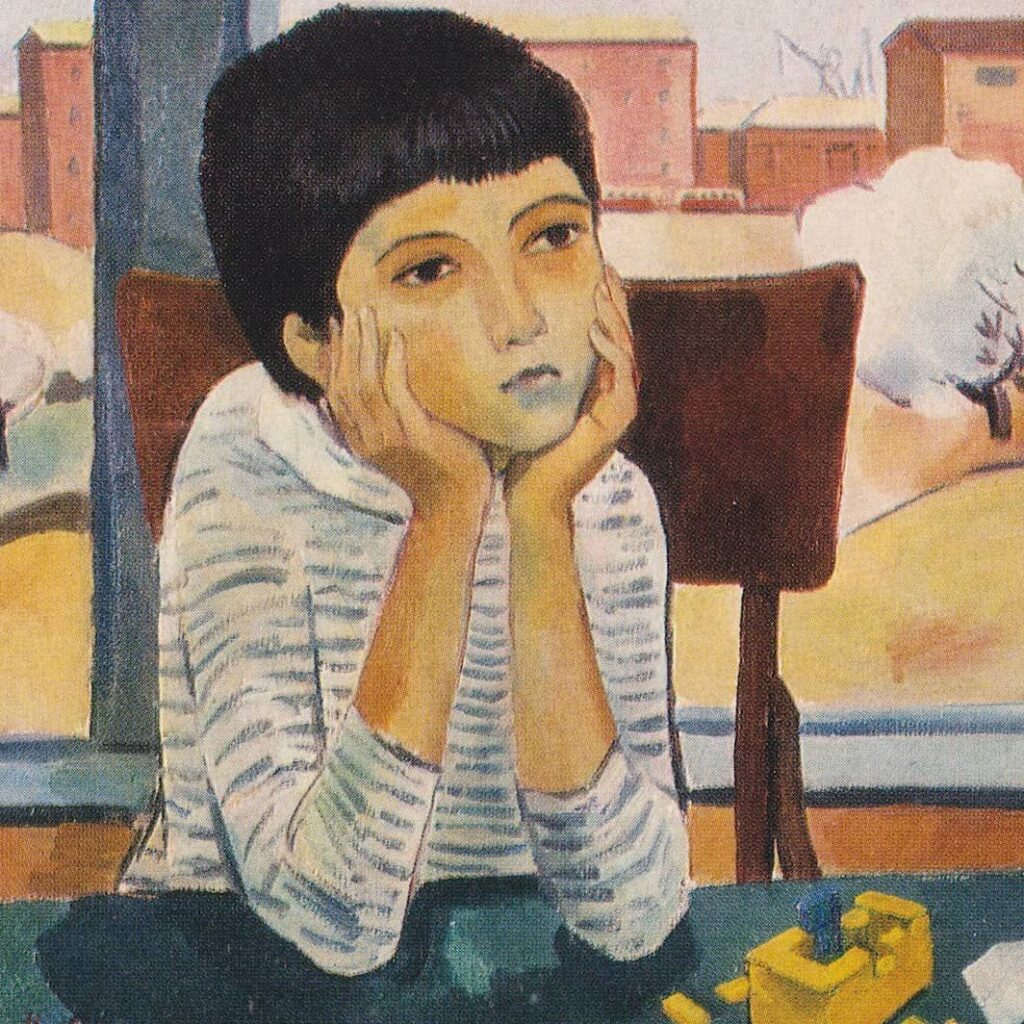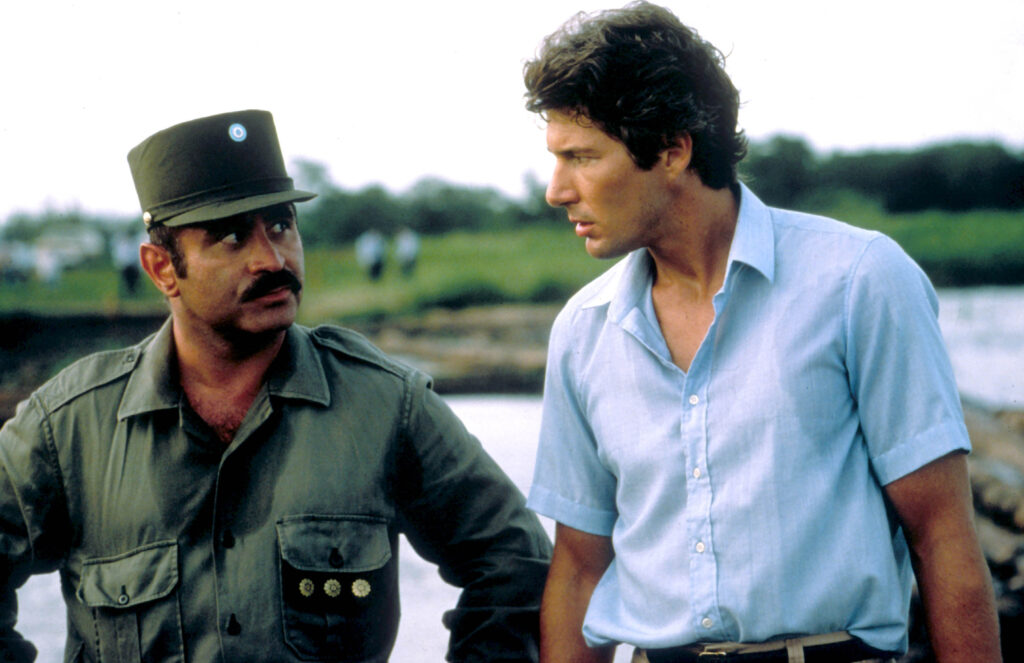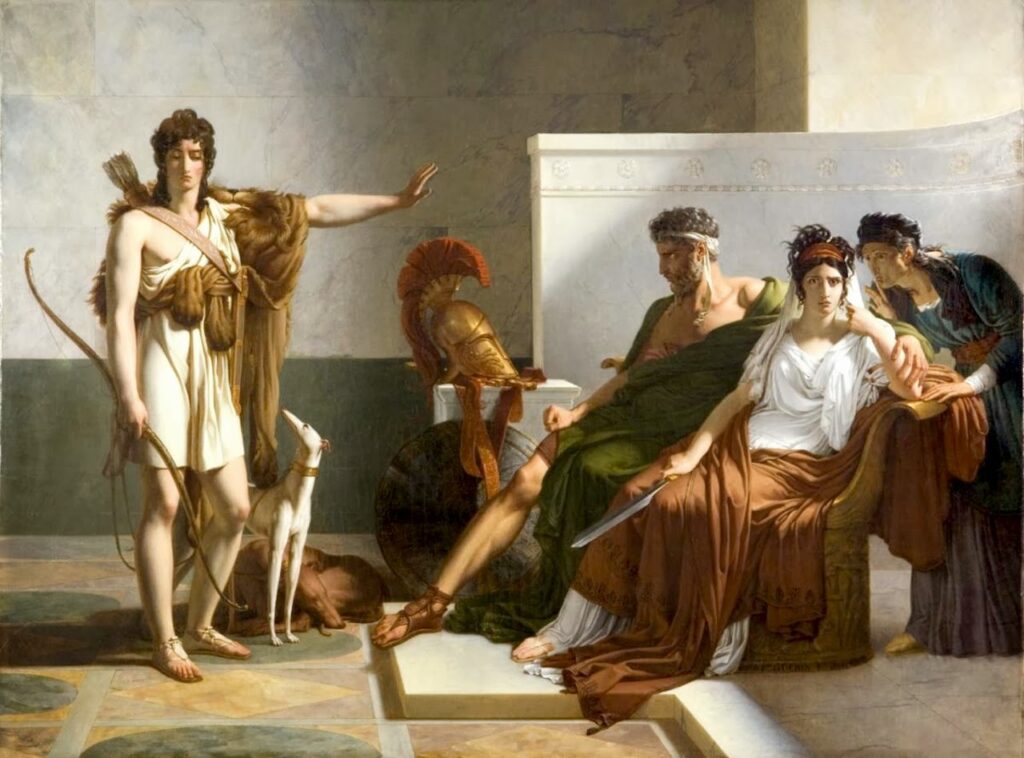Home » Topics / Subgenres » Character study
Category Archives: Character study
My Name Is Aram
William Saroyan
1940
(An open and curious boy growing up in an Armenian community in California encounters the rich quirkiness of his family and neighbors.)

Writing from the spirit of memory. Not a record of specific memories, but effortless intuitive writing that naturally conjures the ethos, tinged with wistfulness, that can accompany the distant remembrance of simpler times. This was the inspiration of William Saroyan as he sat down, and boom, suddenly there appears what would become his best loved book of stories. With all the intense effort I put into my other books, this one (I’m imagining he thought), the one that practically wrote itself, the one in which I warned readers that nothing extraordinary would happen, this is the one?! In his own incredulous (or perhaps disingenuous) words, he “does not believe this manner of writing is the way to get a message to go high-rolling down the ages”. Its greatest value, he thought (not without satire), would be to disqualify him for membership in prestigious literary societies. One can understand why he was thinking this way. In the second half of the 1930s, having risen to the top of the charts, so to speak, with his debut collection of stories including “The Daring Young Man on the Flying Trapeze”, all eyes were on William Saroyan. Surrounded by the effervescing produce of Hemingway, Steinbeck, Faulkner, Fitzgerald, the pressure was on Saroyan to be likewise that great writer. And he did have such ambitions for himself. Yet, something drove him when starting My Name Is Aram to leave society’s gauntlet where it was thrown… or else maybe to find a different way to pick it up. My hunch (with hardly any evidence to back it up) is that he looked at this literary world he had entered, and decided that one helpful thing he could do right away is to center or root himself—to ask himself what had been important in making him who he is. Then, to search that out, or to convey it, he sat back and reminisced (pen in hand) about his humble early life in the immigrant Armenian fruit-growing community of the San Joaquin Valley, California. His goal was not to expose the suffering of the poor or rail eloquently against social ills, not to decry materialism or the threat of fascism, not to create a work of stylistic genious. Rather, his goal was simply to paint vignettes of the sorts of characters that were his family and neighbors in pre-Depression Fresno—to smile at them, to paint them in a sympathetic light, and to draw gently from them what practical wisdom and wit influenced his own development and might be worth preserving for others. Thus we have the young Aram Garoghlanian. And as the author says of himself, though he might not be Aram, he is certainly not not Aram.
The Honorary Consul
Graham Greene
1973
(Argentinian revolutionaries abduct the wrong political figure by mistake, and one cynical acquaintance is the only one who cares… perhaps not even he does.)

Graham Greene, though a writer of great variety, is known for his “seedy” settings (he popularized the adjective, much to his regret) and the moral dimension of his very human characters. In these respects The Honorary Consul is an enduring and typical example of Greene’s style. Early in the book the protagonist Eduardo Plarr criticizes the romantic novelist Saavedra by saying that “life isn’t like” the way that author writes. Here Greene crafts a novel according to the alternative strategy; to show what life is like, with real people encountering real difficulties. The characters’ frail humanity and the ambivalence of their commitments will encourage us imperfect readers to relate honestly to them. The author refuses to vault skyward into heroism, idealism, wonder, or joy, perhaps as these are short-lived and usually confused in the real world. The good guys are bad enough to prevent us from admiring them, and the bad guys are good enough to prevent us from demonizing them. No character has an entirely appetizing mixture of traits, but no character is thoroughly distasteful either.
Like many readers, my gut draws me towards works whose moral distinctions rise into sharper relief—I enjoy esteeming my protagonists. If we insist on this criterion, Greene will not fare well. After meeting the main characters and following them around for a while, we might question whether they are likable enough company. Such readers must take a step of faith throughout the first 100 pages or so, that Greene is telling us a story that we will really care to read. Embarking on the book was for me like hearing the first few sentences of a party yarn that we fear might not be worth the patience. However, may no reader give up before realizing Greene’s purpose! The first impression fades and becomes irrelevant as one reads onward. The grayscale characterization is not due to neglect or apathy on the part of the author. Far from it—the ambiguity represents a strategy conceived for a distinct moral purpose, as paradoxical as this seems. A novel need not be moralizing to be morally interesting. (more…)
The Hunchback of Notre-Dame
(Notre-Dame de Paris)
Victor Hugo
1831
(Love for a young gypsy woman allows an ugly man to rise above the world’s hatred of him, and to show his inner beauty).

Beauty and beast stories are thousands of years old. Here is how they generally go: a beautiful maiden somehow must associate with a character of less-than-alluring appearance, such as an animal, a god in disguise, or a magically uglified human. The girl eventually sees beyond the grotesque exterior to the real person inside, and falls in love. Then very often the whole moral is promptly compromised by the male character’s transformation into the handsome prince. Ah—it’s really about outward appearance (and wealth) after all! I write this with a smirk, as in fact those stories are not claiming that outward appearance should have no importance, but just that love can be demonstrated to be rooted in deeper things if we remove good looks as an experiment. (By the way, we’re generally talking here about removing the man’s good looks. Removing the woman’s good looks is far rarer in literature, as any student of human behavior could have predicted.)
Victor Hugo, perhaps the wisest of the great French novelists, wrote the perfect beauty and beast story—indeed, could do so only because he was wise. He understood beauty and was true to it in all its manifestations; and he understood ugliness and was fearless and trenchant in portraying its effects and implications. The novel is fundamentally about beauty: of Notre Dame cathedral, of Quasimodo its deaf mutant bell-ringer, of Esmeralda the gypsy girl. The beauty is very different in the three examples, except in fragility, which they share—these three beautiful things, a building, a beast, and a belle. And their fragility is due to ugliness, which likewise takes diverse forms.
Hippolytus
(Ἱππολυτος)
Euripides
429 BC
(Disaster ensues when Phaedra falls for her stepson!)

The gods will have their play, and we piteous humans must suffer in double jeopardy. First, vice will eventually bring destruction, and yet we are by nature weak and prone to vice. Second, everyone is subject to fate, which is not kinder to good people than to bad. So we are doomed—we cannot be virtuous as we want to be, and so we are in trouble; and yet even if we could be virtuous we would get smacked anyway by the vicissitudes of fate! Hence Euripides’ fist-waving at the gods… yet he manages to preserve some reverence. Artemis tells us that the pious are still much more highly regarded by the gods than the impious. When the impious person suffers, the gods nod “take that!”, whereas the faithful incur their favor, which can bring some benefit. So, given our sad lot in life, it is better to be suffering and good than suffering and evil. Or that is Euripides’ line anyway. In this play we see how this web of cosmic influences plays out in the life of a chaste and honorable man destined for greatness by rights, when (through no fault of his own) his stepmother takes an improper liking to him.



Madame Bovary
October 21, 2020 / Leave a comment
Gustave Flaubert
1857
(An unhappily married woman pursues a lifelong quest for the fulfillment of her romantic desires, by any means necessary.)
When a novelist is said to rebel against romanticism, anyone with an imaginative, adventurous, passionate, chivalrous, or spiritual streak may be forgiven for wanting to give it a pass. Such a writer sounds staid and dry, shaking a finger at anything beautiful or enjoyable; or worse, morose—seeing the gray in everything and anxious to spend hundreds of pages sharing it with you. So who is this Flaubert, then? Flaubert with the beautiful descriptions, the engaging plot, the dramatic scenes, the fevered dialogue? With this great author’s help we should make a crucial distinction. Flaubert’s aim is leveled not at imagination or adventure or passion or chivalry or spirituality per se, but rather at the perverse attention romantics often pay to the emotional effects that these things have on us. Just as it is not money itself, despite frequent misquotes, but the love of money, that is said to be the root of all sorts of evil, likewise it is the worship of imagination’s fancy-tickling effects, rather than imagination itself, that novels like Madame Bovary seek to dethrone. Emma Bovary ruins her life because, in Flaubert’s words, she seeks emotions, not landscapes. She has a sentimental rather than artistic temperament, meaning she wants to gobble up beauty rather than appreciate it. The romanticism Flaubert criticizes is selfish, subjective, emotivist. It is that attitude which confuses sensual appeals of luxury with the joys of the heart. It is what says “Give me that” rather than “That is wonderful”. Even a true romantic, a healthy romantic– perhaps especially such a person– can doff the hat to Flaubert for this.
(more…)